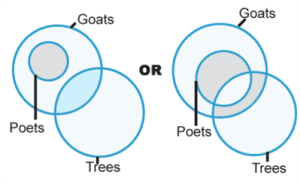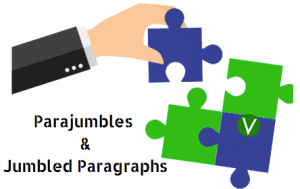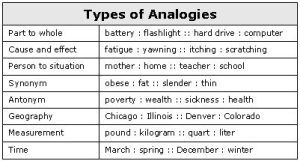Number Systems is one of the simple topics in the Quantitative Aptitude Section of the CAT exam. Consequently, its questions in the CAT exam are well-received by the students. The topics focus on the fundamentalist concepts in mathematics, that is, numbers. At the same time, Number Systems is best known for its fascinating problems. Furthermore, It focuses on testing a student’s problem-solving abilities in pure mathematics and logical reasoning.
Importance of Number Systems
Numbers are fundamental to understand mathematics. It is essential to be able to have a grasp on the different types of numbers and its own group-specific rules. Integers, Rational Numbers, Real Numbers, irrational numbers, and complex numbers are all important groups that make up the Number Systems. That’s why, number systems is an integral part of the Quantitative Aptitude section of the CAT exam.
Syllabus for Number Systems:
1. Properties of Numbers
2. Rules of Divisibility
3. Factorization
4. Highest Common Factor and Lowest Common Multiple (HCF and LCM)
5. Step-Division
6. Concept of finding remainders
7. Finding Last two digits and digits in the units place
8. Problems based on Factorials
9. Base System
10. Fermat Theorem
11. Chinese Remainder Theorem
Tips to prepare for Number Systems for CAT:
1. Back to the Basics:
Start with the most essential topic to cement your foundation to master number systems, that is, properties of numbers. Then, try to go down the list suggested above in an order of difficulty.
Past year topic-wise, CAT question papers make up for great starter material. Check them out here.
2. Count your Mistakes:
Keeping a record of your mistakes is integral to growth and a good preparation strategy. It is also important to go back to your mistakes and being mindful of them frequently in order to avoid them. Many times, silly mistakes as such cost us more marks than we realize. So, beware of mistakes as it will cost you -1 each.
3. Incorrect Approach:
Questions that consist of multiple concepts often confuse a student. Therefore, Students tend to make silly mistakes and regret later. It is best to go through different types of questions along with their answers to understand how to approach particular questions. In this way, you will also be able to revise concepts with their applications.
4. Learn the Shortcuts:
There are also questions for which students can only get the correct answer by using a specific shortcut. In order to avoid these shortcomings, being utterly familiar with previous year questions is essential. The students should learn the shortcuts and tricks which are commonly used in the questions and any additional related shortcuts as well to avoid a reduced score.
Types of Questions:
1. On Ashok Marg three consecutive traffic lights change after 36, 42, and 72 seconds, respectively. If the lights are first switched on at 9:00 A.M. sharp, at what time will they change simultaneously.
Options:
(a) 9:08:04
(b) 9:08:24
(c) 9:08:44
(d) None of these
Solution:
So, what are we exactly trying to find here?
We need to find the time when these three different lights which change after 36, 42, and 72 seconds respectively, change at the same time together.
For this, we are required to find the LCM of these three numbers because that is when those three merge and form a number. Therefore, the LCM will give the time in seconds.
Accordingly,
36 = 2 × 2 × 3 × 3
42 = 2 × 3 × 7
72 = 2 × 2 × 2 ×2 ×3 × 3 × 7
LCM = 2 × 2 × 2 × 3 × 3 × 7 = 504 seconds
So, 504 seconds = 8 minutes and 24 seconds
The correct option is (b)
2. The LCM of two numbers is 936. If their HCF is 4 and one of the numbers is 72, the other is:
Options:
(a) 42
(b) 52
(c) 62
(d) None of these
Solution:
We know that,
the LCM of two numbers x and y = 936
The HCF of x and y = 4
x = 72
Then, y = ?
We also know that, HCF * LCM = product of the numbers
So, 936*4 = 72 * y
y = (936*4)/(72)
Therefore, y = 52
The correct option is (b)
3. Two equilateral triangles have the sides of lengths 34 and 85, respectively. Find the greatest length of tape that can measure both of them exactly.
Options:
(a) 34
(b) 17
(c) 51
(d) none of these
Solution:
We know that,
Equilateral Triangle A has sides = 34
Equilateral Triangle B has sides = 85
We are required to find a tape with length that can measure both triangles exactly. So, here, tape of length of the highest common factor of both lengths can measure the triangles exactly.
34 = 17 × 2
85 = 17 × 5
Clearly, the highest common factor (HCF) of 34 and 85 is 17.
Therefore, the length of the tape is 17.
The correct answer is (b)
4. Find the maximum value of n such that 157! is perfectly divisible by 10^n.
Options:
(a) 37
(b) 38
(c) 16
(d) 31
Solution:
We know that,
10 = 5 × 2
Now, let’s find out the power of ‘5’ in 157!
157/5 = 31
31/5 = 6
6/5 = 1
So, 31 + 6 + 1 = 38
The correct option is (b)
You can check out some more questions on Number Systems, HERE!
We hope you find this post useful!






